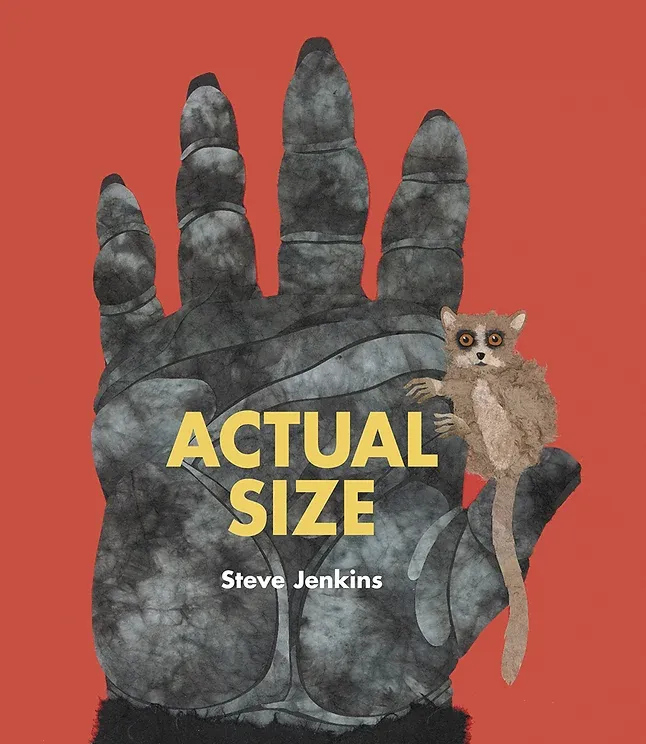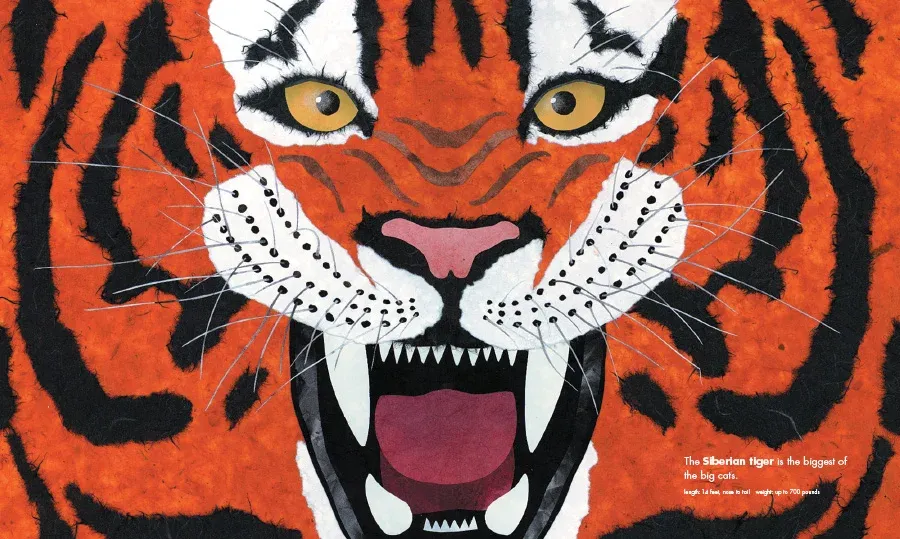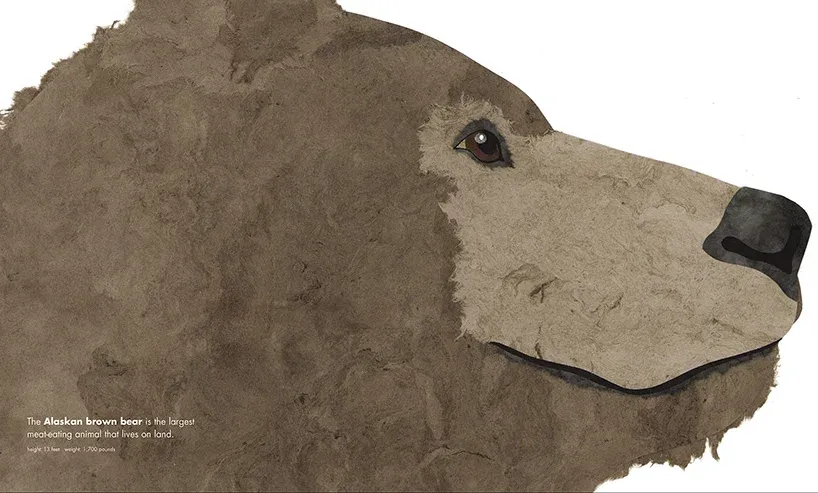Steve Jenkins takes a fascinating and inventive approach in Actual Size , allowing young readers to truly grasp the vastness and minute details of the animal kingdom. By illustrating animals (or parts of animals) in life size, he creates an immediate connection between readers and these creatures, sparking curiosity and awe. The oversized format serves as the perfect canvas for Jenkins’ cut-paper collage style, allowing for intricate details that feel both realistic and whimsical.
One of the book’s greatest strengths is its interactive nature. The simple act of comparing your hand to the gorilla’s giant handprint, or seeing how a giant squid’s eye would dwarf your face, brings the natural world into immediate, almost tactile proximity. This direct engagement is an extraordinary way to convey scale to children, something that can often be difficult to conceptualize with mere words.
The simplicity of the text pairs beautifully with the vibrant, textured images. Each page gives just enough information to pique curiosity without overwhelming young readers. For example, you learn how the saltwater crocodile grows to be 23 feet long or how the Goliath bird-eater tarantula spans a terrifying 12 inches across, facts that both shock and fascinate, encouraging kids to explore further.
What elevates Actual Size beyond an ordinary animal book is Jenkins’ mastery of combining art and science. His cut-paper illustrations have a playful yet informative quality, and every piece serves a purpose. The use of collage feels almost sculptural at times, and the layering technique allows readers to see the complexity of nature’s design.
While the book works well as an engaging read-aloud for young children, it also offers something deeper for older readers. It encourages observation, comparison, and critical thinking. Teachers and parents can use the book to start conversations about biology, ecology, and conservation, making it a valuable educational tool.
Actual Size is a book that invites multiple readings, with children finding new elements to marvel at each time. Jenkins also includes a section at the end with further details on the animals featured, making it not only a visually captivating book but an educational resource that bridges the gap between art and zoology. This title is perfect for budding naturalists and animal lovers, as well as for anyone who wants to foster a sense of wonder about the world.
Questions to ask while reading:
- Which animal surprised you the most in terms of its size?
- How do the illustrations help you understand the animals' sizes better?
- Why do you think the author chose to show the animals in actual size rather than just describing their sizes in words?




